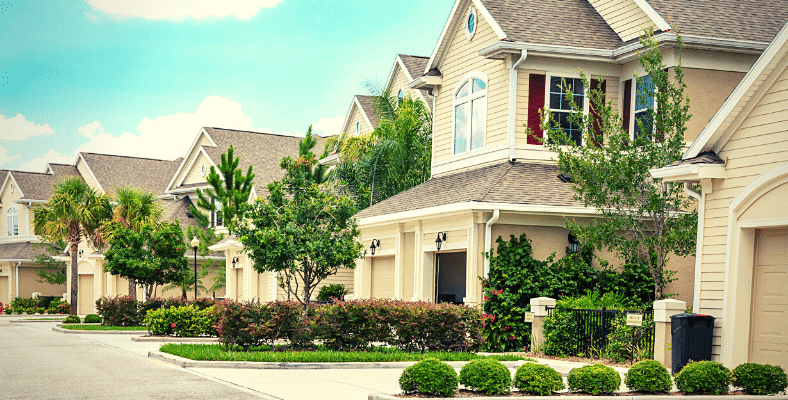
Moving to a new city or town can be exciting and intimidating at the same time. One of the most important decisions to make is where to live. Picking the best neighborhoods can make or break your experience and can be the difference between feeling like you belong and feeling like an outsider.
Because of this, it’s critical to do your research and take your time in finding the perfect neighborhood for you. Knowing what your priorities are and what amenities you need can help you narrow down your choices.
Additionally, learning about the culture, history, and safety of the different neighborhoods will give you more insight into the local lifestyle. With the right research and a little bit of patience, you can find the perfect neighborhood that will help you feel at home and make your move a success.
Identify Your Priorities
The first step in finding the right neighborhood is to identify your priorities. This will help you create a short list of neighborhoods to research and narrow down your options. It’s important to consider all factors, such as commute, affordability, and outdoor activities, as well as amenities such as diversity and access to groceries.
Commute: Is the commute to work reasonable for your job? How about for your children if you have school-aged children? What are the different routes and how long do they take?
Affordability: Are there neighborhoods that fit your budget? Do they offer the other amenities you need?
Outdoor activities: Is there ample space to walk and bike? Are parks and trails nearby? Are there lakes, rivers, or oceans nearby for fishing and swimming?
Access to groceries: What is the nearest grocery store? Is it large enough to accommodate your needs?

Research Amenities in Different Neighborhoods
Once you’ve identified your priorities, it’s time to start researching different neighborhoods. The first things to look at are the different amenities you need. This will help you narrow down your choices.
For example, if you’re looking for an area with excellent public transportation, you may want to rule out areas that are more rural or suburban. Another important thing to look for is how the neighborhood has changed over time. For example, if a neighborhood was once predominantly African-American and now it has a large Latino population, this may affect the amenities and culture of the neighborhood.
Research the Culture and History of Different Neighborhoods
The history and culture of a neighborhood can offer insight into how residents live and how welcoming a neighborhood is. For example, if you’re interested in the African-American history of a neighborhood, you may want to rule out living in an area that was once a slave-holding state.
Be sure to research the demographics of the neighborhood. For example, what percentage of the population is made up of families, singles, or seniors? What percentage of the population is made up of different ethnicities? What is the average household income?
Research Local Crime Rates
Another thing to look at when researching a neighborhood is crime rates. While this is not a perfect science, you can learn a lot by looking at the crime rates of a neighborhood. One of the best ways to do this is to go to the crime map of your city or town and type in the neighborhood you’re interested in.
If you’re moving to a new city, you can also visit the crime map for that city. Be sure to look at both violent and property crime rates. While violent crime rates can be alarming, property crime rates are more likely to affect the average person and include things like theft from cars and break-ins.
Consider Local Schools
If you have school-aged children, it’s important to research the local schools. This can help you decide if a neighborhood is right for you. Another thing to consider is what the school district and grade levels are in the neighborhood you’re interested in.
This can help you narrow down your choices. While it is possible to switch school districts, this can be a long and challenging process.
Visit Different Neighborhoods to Get a Feel
After you’ve done your research, it’s time to go visit the different neighborhoods you’re interested in. You should do this long before you list your home for sale and accept an offer. This will help you get a feel for the neighborhood and decide if it’s right for you. The best times to visit are on the weekend or during the week when there are fewer people out and about.
You can bring along a friend or family member to help you with this process. When you visit a neighborhood, it’s important to look at more than the exterior of the houses.
Walk around the neighborhood and look for things like how clean it is, how much people are out, and how neighbors interact with each other. This will help you get a better feel for the neighborhood and decide if it’s the right fit for you.

Talk to Residents to Get an Insider’s Perspective
The best way to get an insider’s perspective on a neighborhood is to talk to residents who live there. This can help you learn more about the history and culture of a neighborhood and how friendly the residents are.
You can ask residents anything you want and get their perspective on the neighborhood. You can find residents by posting on local online forums, through online roommate finders, or by knocking on doors.
While this isn’t a foolproof method, it can help you get a better understanding of a neighborhood and its advantages and disadvantages.
Consider Your Budget
Finally, when deciding on a neighborhood, be sure to consider your budget. Some neighborhoods will be more affordable than others, and this may rule out certain areas. It’s important to keep your budget in mind when you’re looking for a new house, condo, or townhome.
If you follow these steps, you can find the perfect neighborhood that will help you feel at home and make your move a success. With so many factors to consider when deciding on a neighborhood, it’s important to do your research and take your time.
Picking the right neighborhood can make all the difference in your experience and can be the difference between feeling like you belong and feeling like an outsider.
